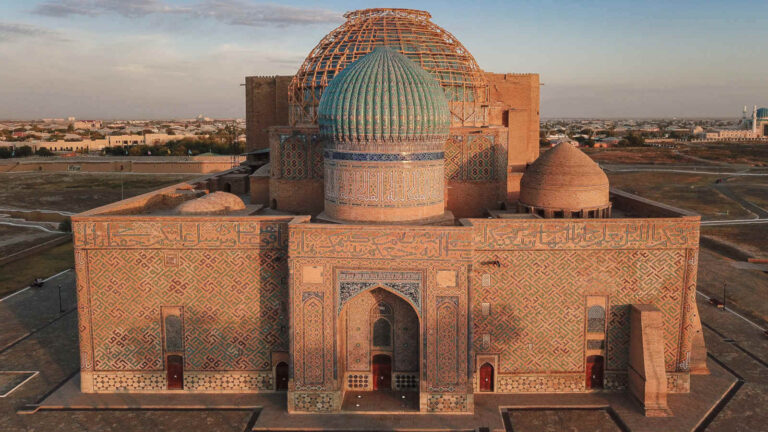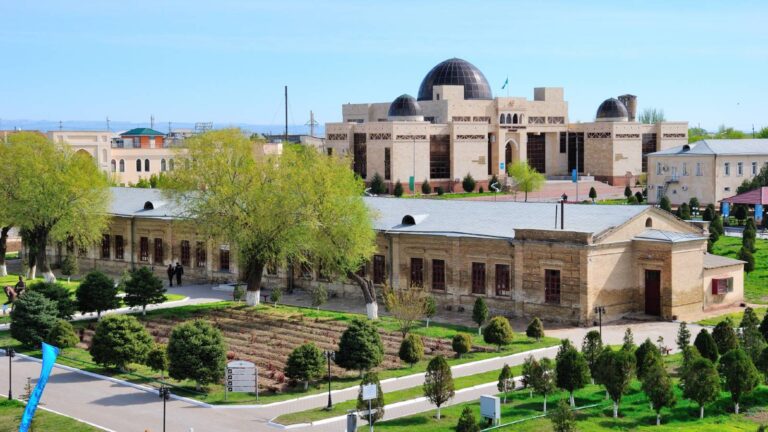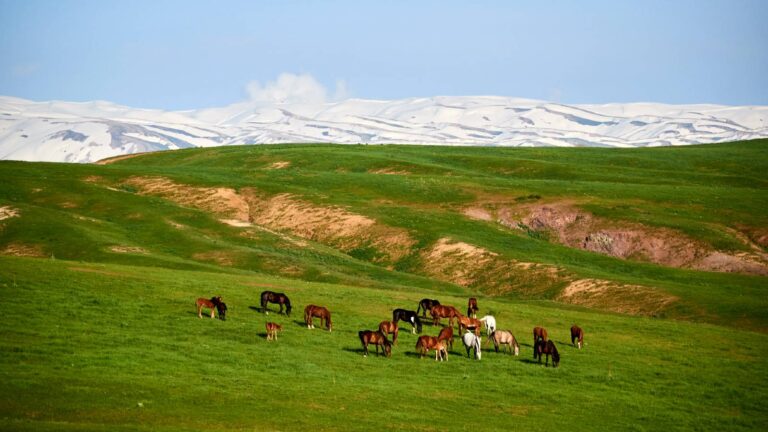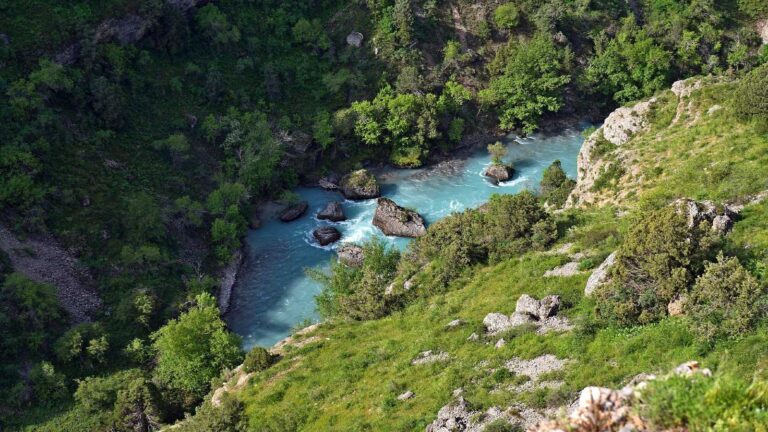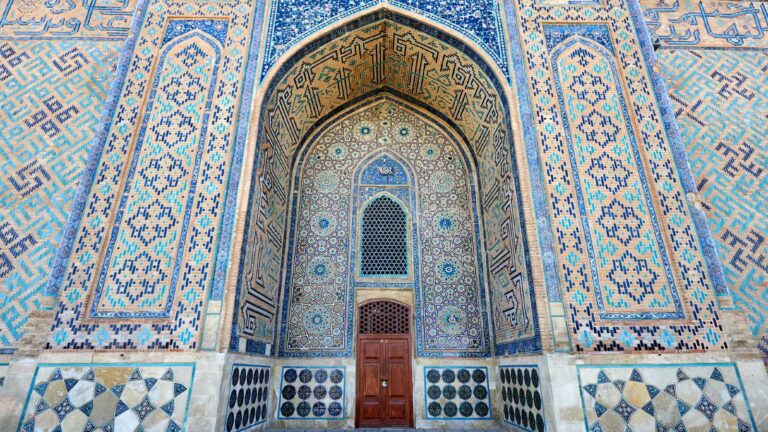Getting There
The Arystan Bab mausoleum is located near the Shaulder village, in the South Kazakhstan region. First, you need to get to Shymkent either by plane or by train. Minibuses and taxis go from this city to the attraction. Travelers with their own cars are recommended to go north-west from Shymkent along the E-38 highway, and after Tortkol turn to the south-west – onto the P-58 road, in about an hour after crossing Shilik, Timur, Shaulder and Bayaldyr they can get to Arystan Bab mausoleum.
What to Expect
The mausoleum dates back to the 14th century, but was reconstructed several times up to the 18th century. In the 18th century the previous mausoleum, which had been destroyed by an earthquake was replaced with a double domed structure supported by two carved wooden columns. Most of the current structure was constructed in the first decade of the 20th century with only the carved wooden pillars, remaining from the original building.
The mausoleum features a large central arch and wide front facade with minarets at the ends and two large domes to the left of the main arch. As well as the two-chambered table-tomb (gurkhana) of Arystan Bab and three of his students, Hermet-Azyra, Karga-Baba and Lashyn-Baba, a mosque and auxiliary quarters and museum are located in the other rooms of the mausoleum. The effect of high groundwater levels led to the mosque being demolished and rebuilt in 1971. A quran showing medieval calligraphy is displayed under glass here. The mausoleum is today a place of pilgrimage.
The mausoleum is a burial vault and a memorial mosque. Today it is a today a place of pilgrimage Muslims. Currently, over the grave of Arystan Bab there is a mausoleum with an area of 35 × 12 m, built of burnt bricks on alabaster mortar in the front walls masonry. The mausoleum features a large central arch and wide front facade with minarets at the ends and two large domes to the left of the main arch. As well as the two-chambered table-tomb (gurkhana) of Arystan Bab and three of his students, Hermet-Azyra, Karga-Baba and Lashyn-Baba, a mosque and auxiliary quarters and museum are located in the other rooms of the mausoleum. The effect of high groundwater levels led to the mosque being demolished and rebuilt in 1971. A Quran showing medieval calligraphy is displayed under glass here.
History
According to legend, Arystanbab died and was buried in the vicinity of Otrar in the XII century. Probably at the same time his mausoleum was built. It is not known for certain what happened to the mausoleum after the Otrar disaster, when the troops of Jochi, after a seven-month standoff, completely destroyed the nearby large city of Otrar, along with all its population. In the 14th century, at the order of Timur a new building was constructed on the ruined mausoleum site. But it has not survived to this day. The first known reconstruction of the mausoleum dates back to the XIV-XV centuries. The carved wooden columns of the aivan have survived from this building. In the 18th century, on the site of an ancient mazar destroyed by an earthquake, a two-domed structure with an aivan bearing against two carved wooden columns was erected.
The building of the 18th century collapsed and was rebuilt in 1909, as stated by the inscription on one of the cartouches of the frieze.
Facilities Available
The attraction houses a mosque and a souvenir shop. There are a few guest-houses and hotels located nearby.

